Looking for a great birdwatching spot? Try this former Navy site in North Kingstown
NORTH KINGSTOWN — Snowy egrets, purple martins, red-shouldered hawks and countless other birds inhabit the forests and fields in Rhode Island.
I’m no expert, however, and I’m often baffled when I try to identify them by sight or sound when I hike along the trails.
But I decided I’m not too old to learn, so I signed up for a group bird walk through the Calf Pasture Nature Area. The hike was led by Laura Carberry, a guide for the Audubon Society of Rhode Island, who also manages the Fisherville Brook Wildlife Refuge in Exeter.
I learned quite a bit from her and the other birders on the walk.
Walking RI: Coastal views and prime bird-watching at Tiverton's Emilie Ruecker preserve
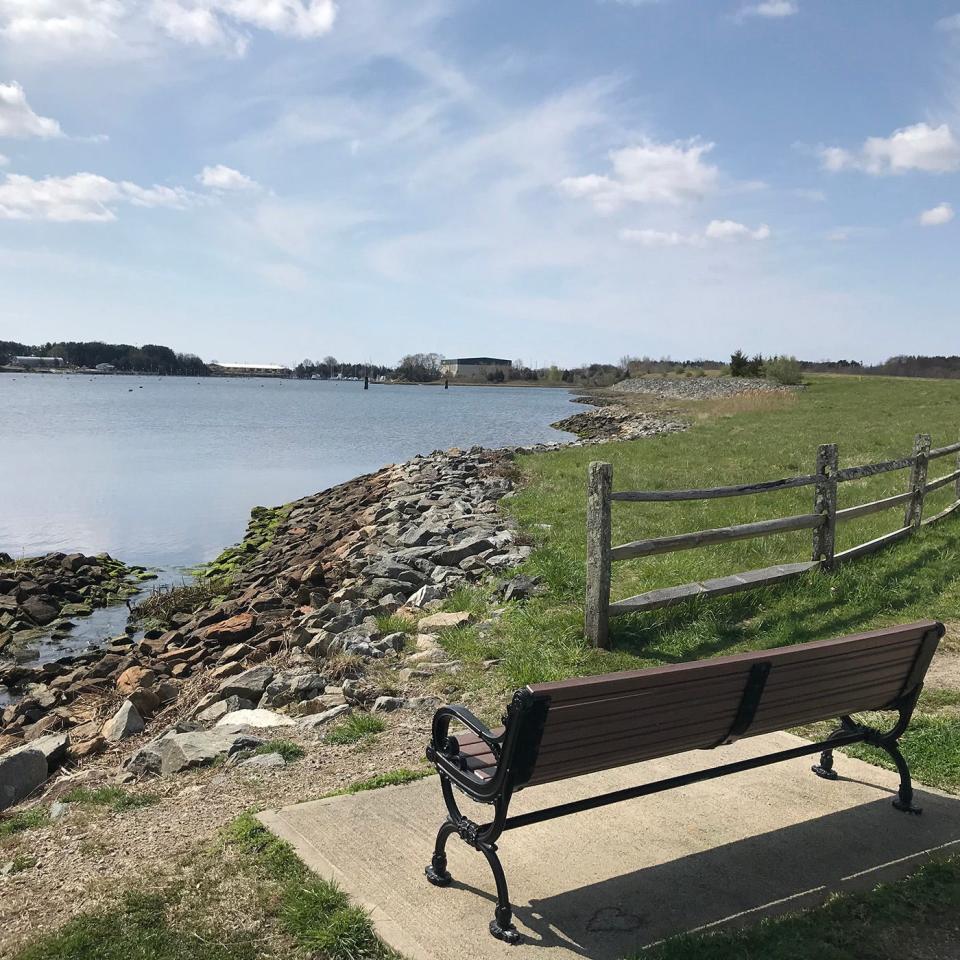
Walking RI: Immigrant war hero's legacy lives on at Glocester preserve
Walking RI: A step-by-step guide to beautiful Stepstone Falls
We spotted some amazing sights along the way, including a purple martin darting above a large field, snowy egrets standing on the banks of a tidal creek and a red-shouldered hawk soaring high above a pine forest. I also saw dozens of other birds on our walk and learned the history of the public, 189-acre nature preserve that has been reclaimed after once being part of a mammoth Navy base.
We set out from a lot at the start of the Calf Pasture Point Bike Path, the eastern extension of the Quonset Point Bike Path in the northeast corner of the former Quonset/Davisville military complex.
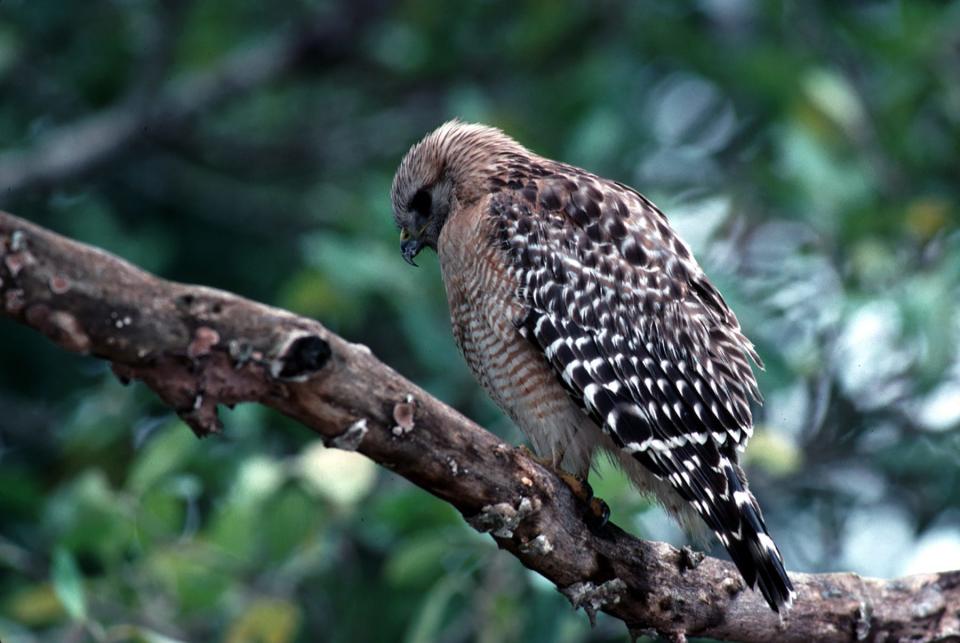
More: Best place for a hike and osprey spotting? Try the Great Swamp in South Kingstown
More: That parakeet in your yard? Here's why it probably isn't a lost pet
Walking RI: Exploring trail-blazer 'Vin' Gormley's playground in Charlestown
Peak migration season about to begin in RI
Carberry told our group of 16 walkers that Rhode Island is on the cusp of peak migration season in mid-May, when hundreds of birds arrive just in time to feed on the mayflies, bugs, mosquitos, caterpillars and black flies that come out.
But she also noted that climate change has affected the weather and vegetation growth and has caused some birds to adjust their timetables for staking out their habitat and building nests to spend a season here.
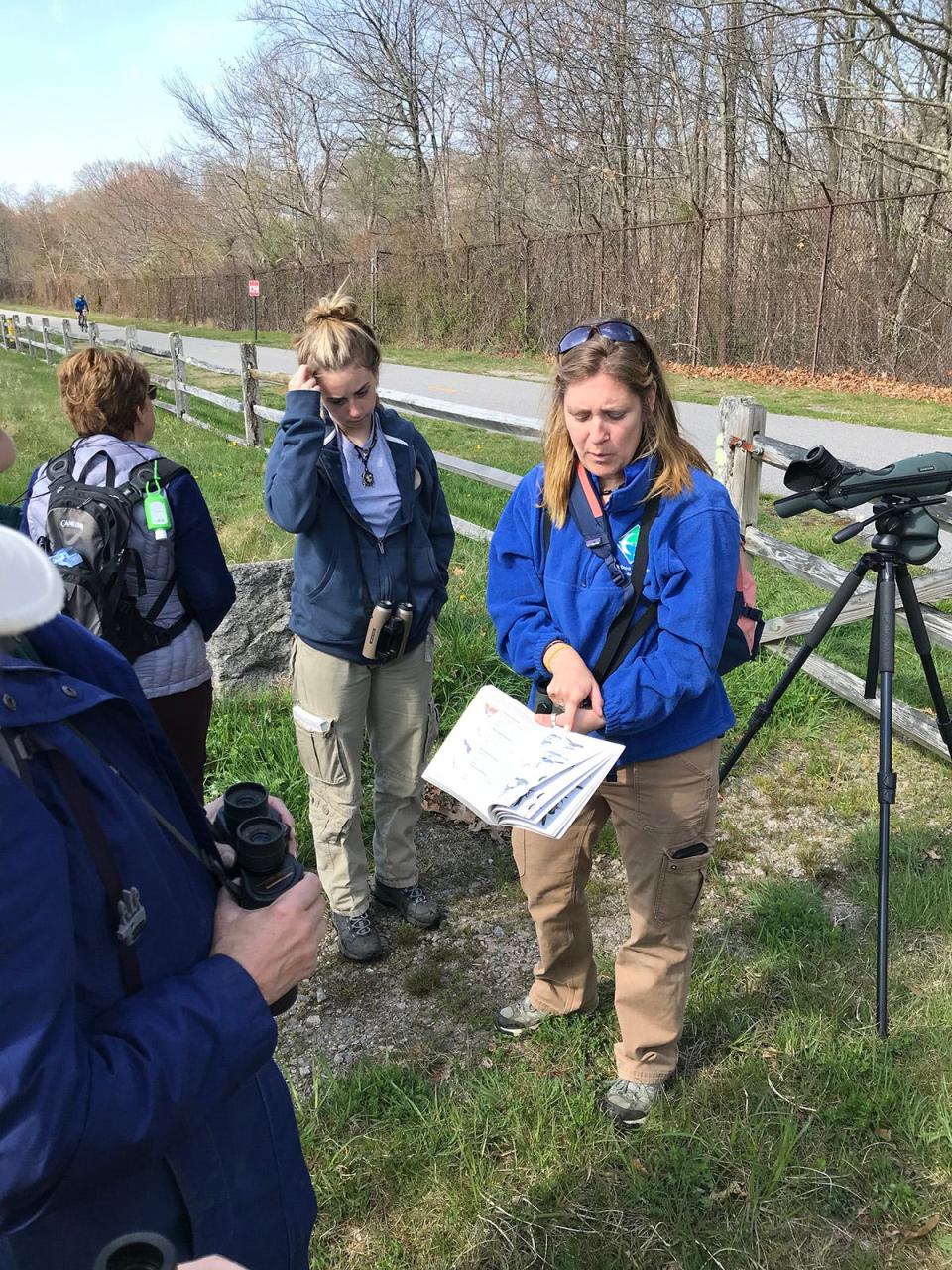
Starting out on the paved bike path, we soon passed by a map and a sign with information about the land’s rich history. For thousands of years, Native Americans lived here, and archaeologists have uncovered the remains of a workshop where the indigenous people made tubular shell beads, called wampum. During the 17th, 18th and 19th centuries, farmers raised livestock in the pastures and worked the fields.
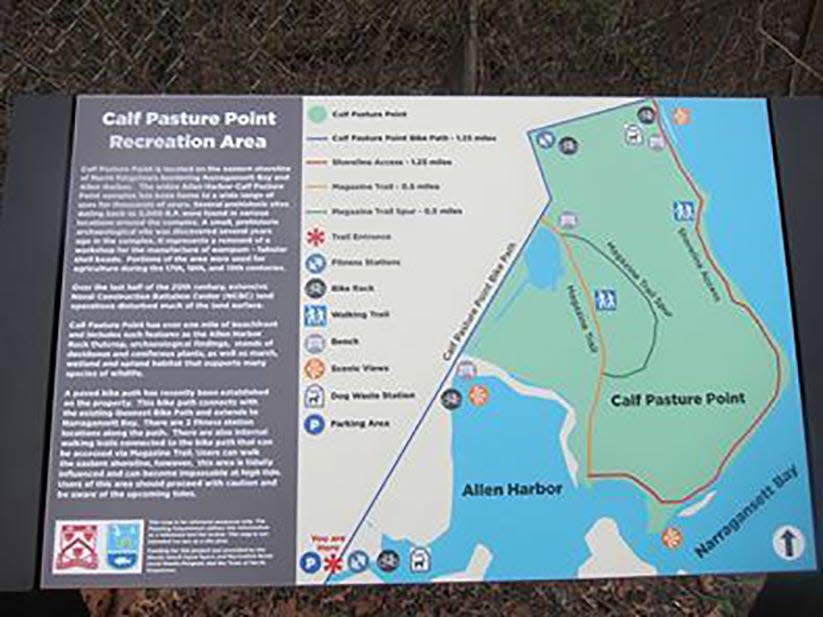
In 1942, the Davisville Naval Construction Battalion began to develop the land as a field training center and built munitions bunkers, fabrication and assembly areas, warehouses, piers, maintenance shops, administration buildings and other installations. The Navy left in 1974, and local and state leaders reclaimed the land as a nature and recreation area.
Walking RI: At Peck Pond in Burrillville, enjoy the calm before the summer rush
Walking RI: Trestle Trail in Coventry is a great spot for fitness training
Walking RI: Seal-watching and scenic splendor at Rome Point in North Kingstown
The first section of the path is lined with pines on the right and a high fence on the left. After a few hundred yards, it passes a fitness station. In nearby bushes and trees, chipping sparrows perched and black-capped chickadees chirped what sounds to some like “spring is here.”
Just ahead on the right, you can get a glimpse through the trees of Allen Harbor, named for John Allen, who bought the property in the 1750s. The Navy filled and dredged parts of the cove in the 1940s, and the material they dug up was deposited on the surrounding land.
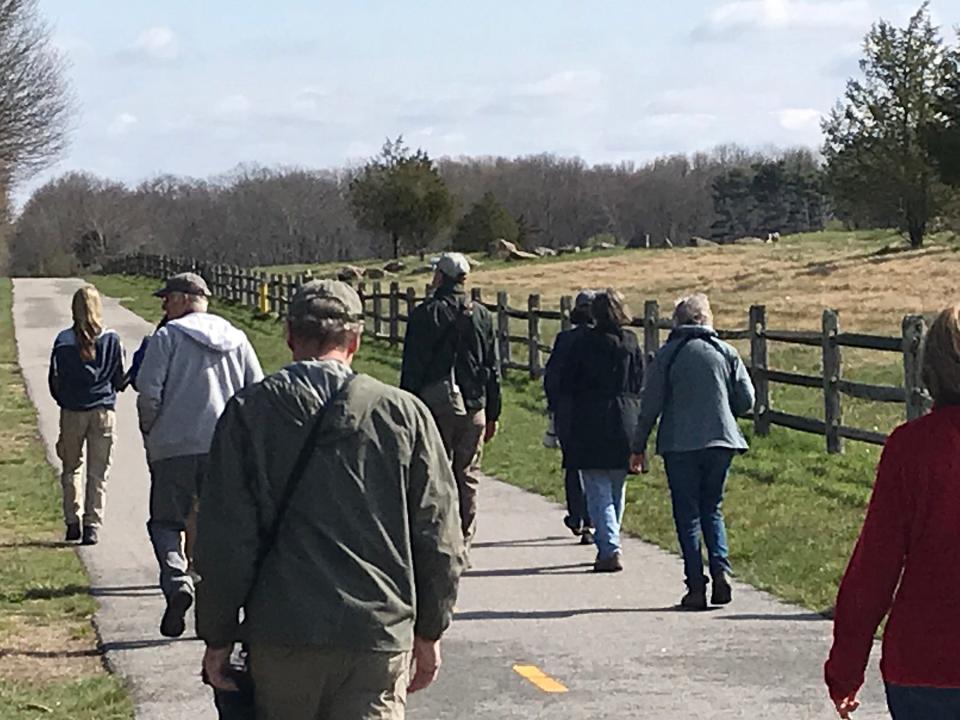
At an opening in a wooden beam and post fence farther down the path on the right, we walked up a slight rise into a large field with a few trees, where we saw an osprey overhead and goldfinches with their undulating flight patterns.
Also visible were mallard ducks, song sparrows, tree swallows, Northern cardinals, red-winged blackbirds and barn swallows. Carberry explained that savannah sparrows nest on the ground in open fields and make a buzzing sound, almost like an insect.
Walking RI: Retracing Thoreau's 1854 hike through Providence
Walking RI: Rediscover Providence's Roger Williams Park on a serene hike around its ponds
Egrets, owls and much more
To the east and down a slope, a snowy egret, marked with yellow feet and a darker bill, stood on the stone-lined banks of a stream that connects to the harbor.
We returned to the bike trail and followed it until we saw a pair of blue-gray gnatcatchers with a white belly and a tail that sticks up like a wren's. The tiny, 4-inch bird is tough to pick out of the trees, and Carberry suggested that when you find one, you should keep your eyes on the bird while raising your binoculars slowly to your eyes so you don’t lose sight of it. That worked for me.
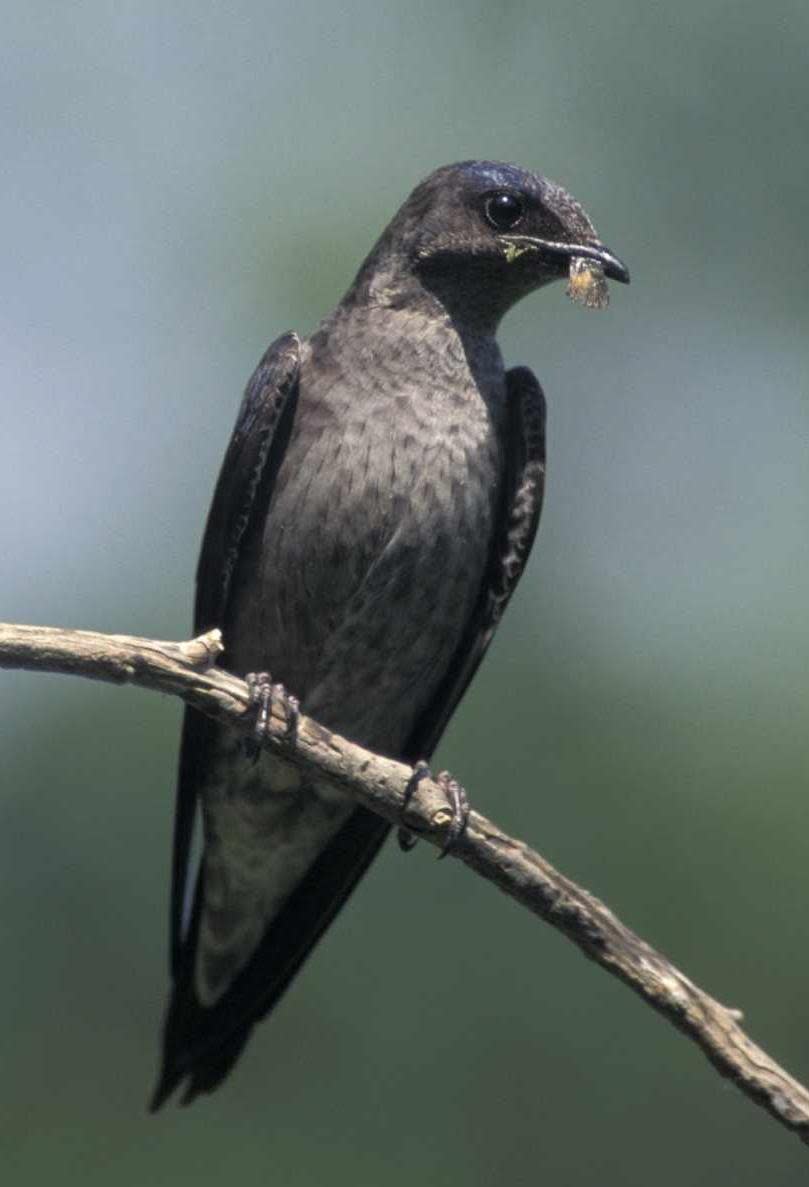
In the wetlands on the left, we heard peeps, but those early-spring sounds came from frogs, not birds. Occasionally, the natural sounds were drowned out by the drone of huge military aircraft flying overhead out of the nearby Quonset State Airport.
Just ahead on the bike path was another highlight of the walk. A barred owl was perched about 20 feet up on a branch of a tree. Another one, perhaps a male (they’re smaller than the female), flew into the area and landed on a limb.
The barred owl makes a call that sounds like, “Who cooks for you?”
Walking RI: 5 great hikes with ocean views
Walking RI: At Trustom Pond in South Kingstown, silence is golden
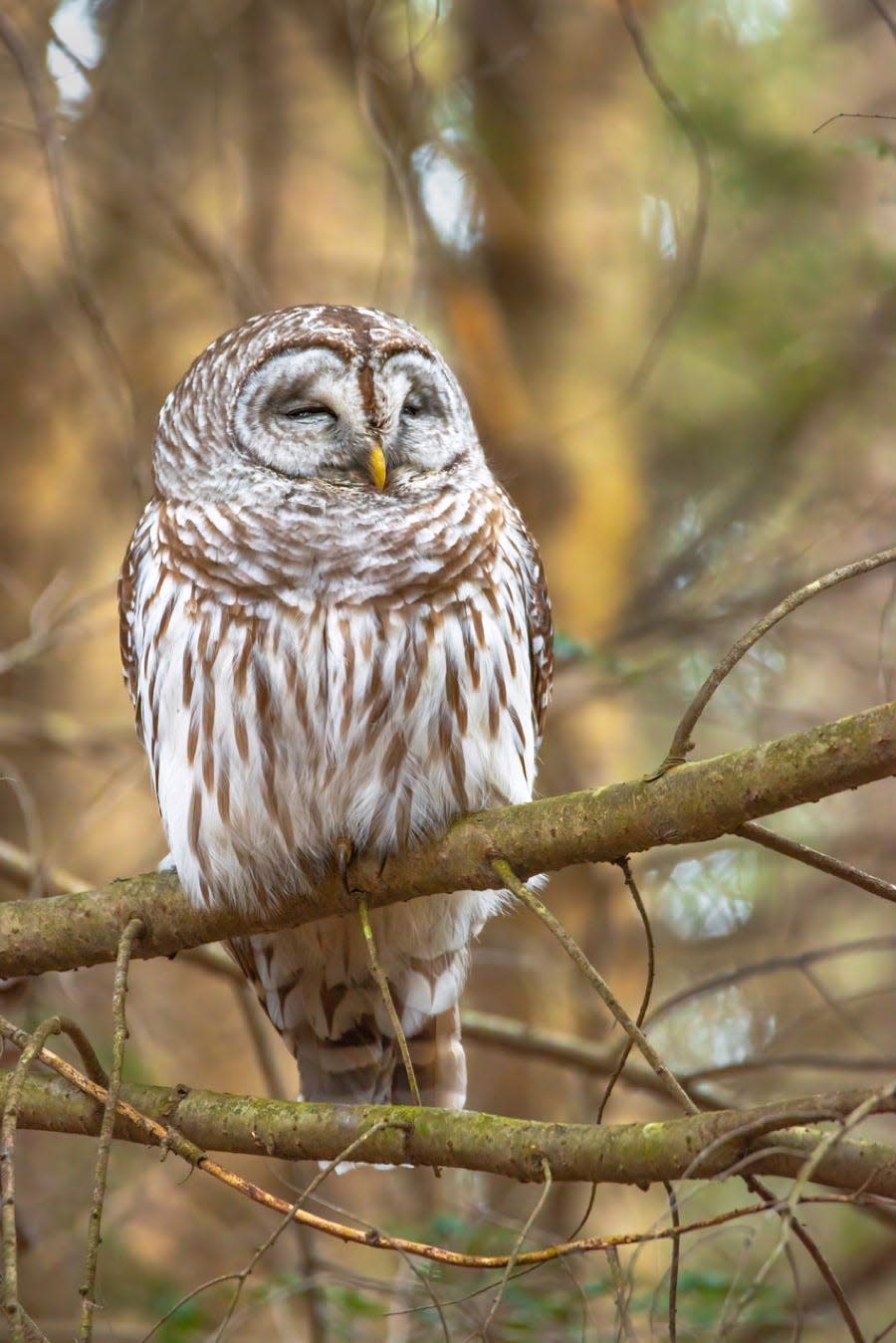
After stopping and peering through scopes and binoculars for a few minutes, we continued on the path by a salt marsh with tall reeds on the right until we reached a fork. To the left, the path leads to a residential neighborhood and the shoreline. We went right on a dirt road, called the Magazine Trail, and passed a sign that read, “Protected Wildflower Area.”
Spotting vestiges of old Navy base along with the birds
Along the old road, we heard a downy woodpecker and spotted a pine warbler, a Carolina wren, a cardinal and red-winged blackbirds. I also noted side paths just off the road and the remains of the old Navy base, including a cement foundation and many capped pipes with locks on them. The road ran through a stand of cedars and by a 40-foot outcropping before reaching the east side of Allen Harbor. Across the water, we saw a glossy ibis standing in the marsh, a common loon in the grass, a double-crested cormorant in the water and a red-breasted female merganser on a small island.
Walking RI: A birder's paradise by the shore in Middletown
Walking RI: Retracing an Aussie Walkabout in George Washington Management Area
Walking RI: In the footsteps of outdoorsman Ken Weber, who wrote RI hiking 'bible'
The harbor was filled with empty moorings that will soon be used to tie up boats. A marina, yacht club and other buildings stood to the southwest.
If you continue along the road, it leads to Calf Pasture Point and a mile-long beach on Narragansett Bay that is best accessible at low tide. But at that point by Allen Harbor, we turned around and retraced our steps to head back, seeing chimney swifts, robins and starlings along the way.
Just before returning to the parking lot, we stopped to watch a stately great egret, with a yellow bill and yellow feet, walking alone during low tide in the shallow water of a tidal creek.
It was a nice sighting to end our walk of about 3.5 miles, which took us a little over 2½ hours.
I can identify more birds now, thanks to the help of Carberry and the others. I also better understand the value of reclaimed land that can be turned into a safe haven for dozens and dozens of colorful, interesting and diverse birds.
But there’s always more to learn.
Trail tip
Online resources to help find, identify and track birds in Rhode Island are available at ebird.org, affiliated with the Cornell Lab of Ornithology, and merlin.allaboutbirds.org.
The Audubon Society of Rhode Island organizes bird walks. Registration is required. Learn more at asri.org.
Walking RI: Hollywood wow factor on Hopkinton trail
Walking RI: 5 best family-friendly hikes around RI for nature lovers
Walking RI: Narragansett Bay views and WWII history at Beavertail State Park
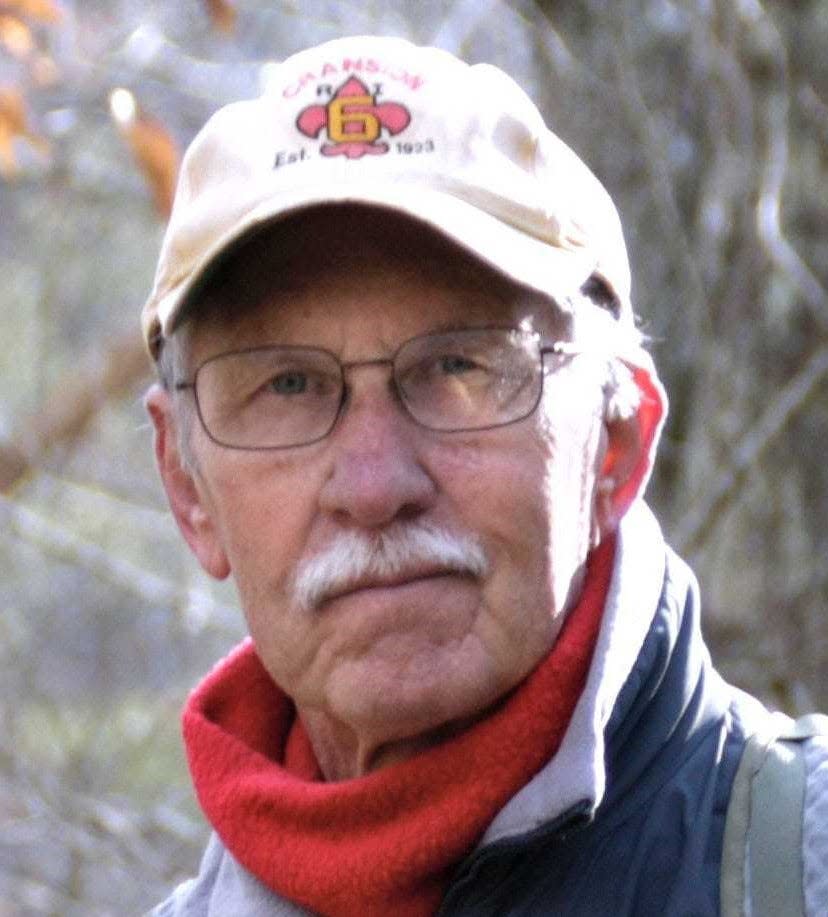
John Kostrzewa, a former assistant managing editor at The Providence Journal, welcomes email at johnekostrzewa@gmail.com.
This article originally appeared on The Providence Journal: Great birdwatching hike at former Navy site in North Kingstown RI

